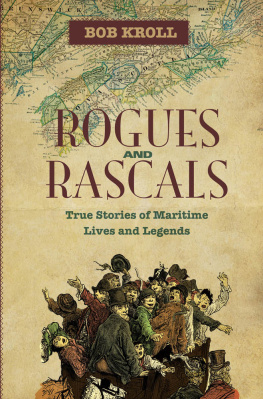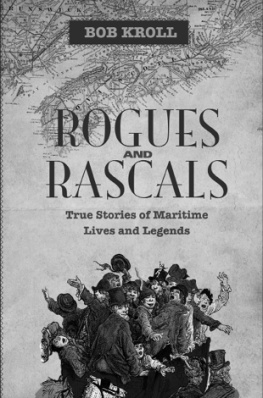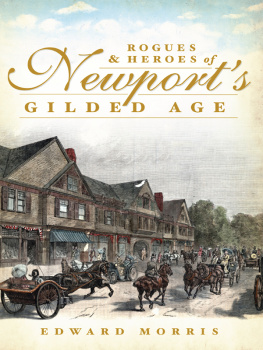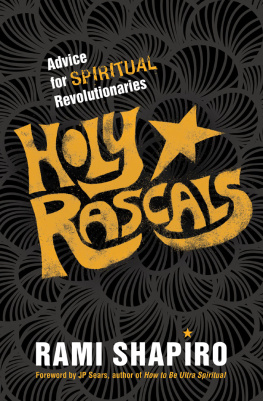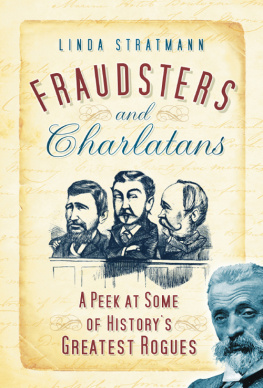Copyright
Copyright 2011, Bob Kroll
All rights reserved. No part of this book may be reproduced, stored in a retrieval system or transmitted in any form or by any means without the prior written permission from the publisher, or, in the case of photocopying or other reprographic copying, permission from Access Copyright, 1 Yonge Street, Suite 1900, Toronto, Ontario M5E 1E5.
Nimbus Publishing Limited
3731 Mackintosh St, Halifax, NS B3K 5A5
(902) 455-4286 nimbus.ca
Library and Archives Canada Cataloguing in Publication
Kroll, Robert E., 1947
Rogues and rascals : true stories of Maritime lives
and legends / Bob Kroll.
eISBN 978-1-55109-883-8
1. Maritime ProvincesBiography. 2. Maritime
ProvincesHistoryMiscellanea. I. Title.
FC2029.K76 2011 971.50099 C2011-903912-5
Nimbus Publishing acknowledges the financial support for its publishing activities from the Government of Canada through the Canada Book Fund (CBF) and the Canada Council for the Arts, and from the Province of Nova Scotia through the Department of Communities, Culture and Heritage.
Dedication
To Julia, Ellery, Sarah, Viola, Xavier, and Rebecca
Preface
The people in these stories were real. The stories are true. Occasionally I fleshed out the historical bones with details from other sources. And sometimes I attributed motive to actions and coloured personal conduct with feelings.
Thirty years ago, I set out to find true stories about ordinary people in the Maritimes: stories about everyday life; stories about the odd, the interesting, and the unusual; and about misfits and malingerers, heroes and failures, hucksters, soul savers, and criminals. I sought stories about our ancestors and how they lived.
I discovered that people are peoplepast and present. Our motives and behaviours are not a whole lot different from those of our forefathers. And I came to realize that history is a harmony of the deeds and misdeeds of people, a seamless pattern of random and sometimes discordant sounds that somehow swirl together into a melody. Open this book anywhere, and imagine the two of us in a setting of your choice, telling stories about our ancestorswarts and all.
The historical sources for these stories include Nova Scotia, New Brunswick, and Prince Edward Island Supreme Court cases and judgement books, Courts of General Quarter Sessions cases, coroners reports, grand jury books, official government correspondence, and Executive Council minutes, as well as various family papers, letters, and diaries. Newspapers were an excellent source for detailing criminal activities and the deeds of community-favourite sons and daughters, as well as odd, interesting, and unusual happenings throughout the region. Secondary sources played an important role as well, such as Tales of Abegweit , Loyalists of Shelburne , Lifeline , Shipwrecks of Nova Scotia , Pioneer Profiles of New Brunswick Settlers , Rambles Among the Bluenoses , The Old Attorney General , and others. Secondary sources also include numerous scrapbooks (held in provincial archives) containing time-tinted newspaper articles, personal recollections, and photos.
Heidi MacDonald helped with the Prince Edward Island side of the research, and B. J. Grant helped with New Brunswick. At the time, Heidi was a graduate student at the University of New Brunswick.
Barry John Grant was a New Brunswick author. He often wrote his research into stories, and, when he did, I hardly changed a word. I identified his contributions with his initialsBJG.
Bob Kroll
April 30, 2011
Old Comers and New Comers
A POWERFUL PREACHER
In 1823, two strangers arrived in Halifax on the packet boat from Saint John, New Brunswick. The man was nothing but skin and bone, and his wife a puny waste of womanhood. Their wretched appearance caught the towns attention. Merchants and tradesmen kept a close eye on this ragtag couple, who took a cellar room on the waterfront.
About a week later, this man, who called himself Jackson, rented McIntyres Hall on Gottingen Street, behind St. Georges Round Church. He announced in the newspaper that he would preach the word of God to both sinners and saved.
That night, McIntyres Hall bulged with a mix of sinners, scorners, and those throbbing with curiosity. Jackson took the makeshift pulpit. His voice was a lullaby one moment, a thunderbolt the next.
He told of arriving in Halifax bent and hungry, and how each night he prayed and prayed for sustenance with what little strength he had left. Then one morning, he woke to find on his doorstep a barrel of mackerel and another of flour. A gift from God, he proclaimed. A miracle! And here I stand before you, proud and healthy, living proof of Gods mercy.
The next day, throughout Halifax, it was Jackson said this and Jackson said that. His congregation swelled immediately, and within a month, Jackson had his own revivalist church on Brunswick Street.
People must have been hungry to hear a powerful preacher, for they travelled from miles around by foot, buggy, and ox cart to listen to the glory of Jacksons voice.
But a preachers voice is seldom enough to hold a congregation for long. Within a few months, there was dissent among the ranks. Some wanted Jackson to preach more fire and brimstone, and others wanted less. Some wanted religious ritual, while others preferred only words.
One Sunday, the deacon was returning up the aisle with the collection basket brimming with hard cash. A man sitting on the aisle made an insulting remark about Jacksons sermon, something about it deserving little more than a halfpenny for its ability to stir the soul.
The deacon stopped suddenly and brought the collection basket down on the mans head. Coins flew everywhere, and the congregation dived after them. Many of the less devout pocketed what they grabbed, and shoved aside others in order to gather more. A fight broke out. Women screamed. Families fled.
Needless to say, there was no benediction at that service. And within the month, Jackson and wife boarded a coaster boat bound for Boston.
FOSSS DAM
(BJG)
Charles Orrin Foss hit New Brunswick in 1921. He was a Yankee by birth, a civil engineer by trade, and a very persuasive man. He was so persuasive that he convinced New Brunswicks premier, Walter Foster, to finance the idea of generating the provinces electricity and selling it. He also persuaded the premiers daughter to marry him.
When Fosters government decided to go into the electricity-making business, it dammed the Musquash River, a considerable stream that flows into the Bay of Fundy a few miles west of Saint John.
The dam was fairly finished in 1923 when the province was hit by one of the worst series of floods ever. Up and up the water behind the Musquash dam rose, until the whole top of it became a spillway. The centre of Fosss dam held, but pressure punched holes near each bank. It seems somebody, in order to save money and pay a kickback, forced the contractors to use mainly loose gravel instead of good sand, and also shortchange on the amount of cement.
No one witnessed the disaster, but at ten oclock on the night of April 30, 1923, the enormous roar carried for miles as most of Fosss dam went raging down the stream bed. Only the greater lumps of concrete remained. And the raging waters created a kind of new inland delta of red mud.
One human life was lost: a farmer drowned while trying to save a cow from the reddish mire. And Fosss career was ruined. Leaving all behind, including his wife and family, Foss bought a railway ticket and disappeared. The only thing of him that ever returned to New Brunswick was his obituarytwo years later. Charles Orrin Foss had died in California.

